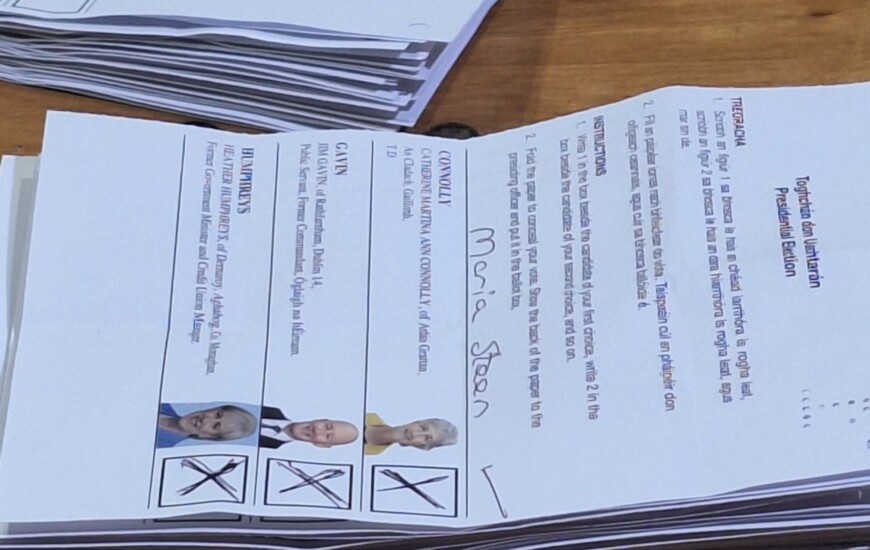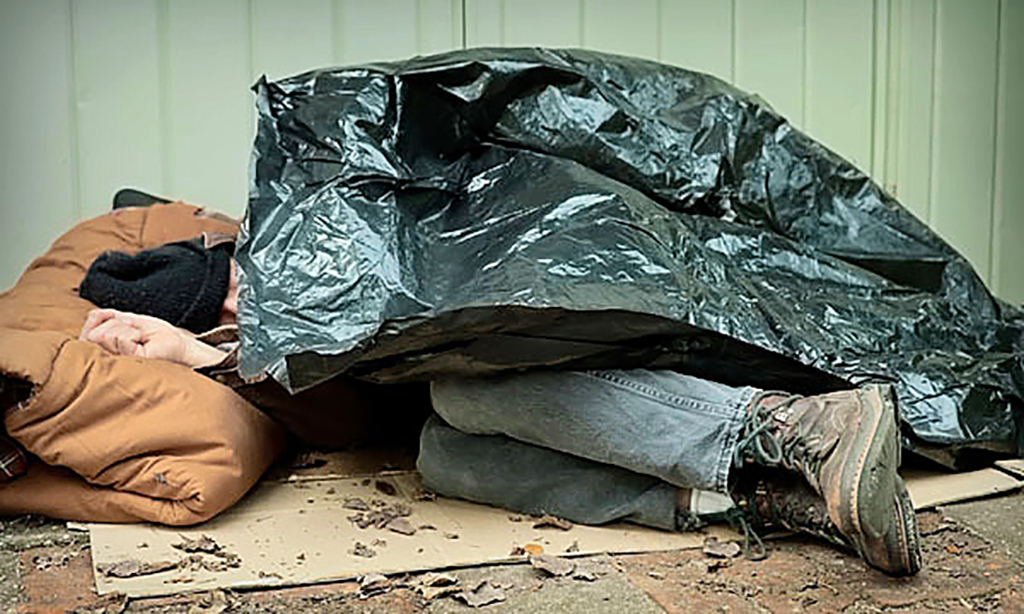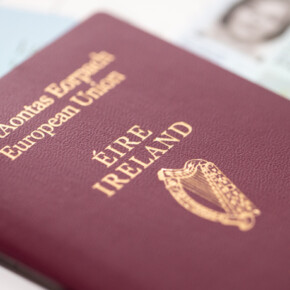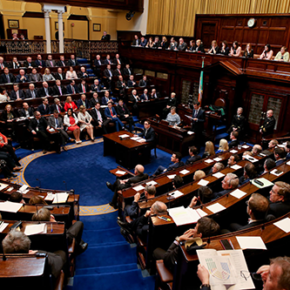Spoil the vote: A flash in the pan or a sign of something more?
Mike Finnerty 05 Nov 2025
The main subplot of this year’s presidential election was the campaign to spoil the vote, which ended up with 12.9% of the vote.
In 2018, Peter Casey was seen as the protest vote of choice, and his anti-establishment campaign attained 23.2% of the vote (or 342,727 first preferences).
There is quite a difference between 23.2% of the vote and 12.9% of the voters spoiling their ballot.
In raw numbers, 213,738 people spoiled their vote, with Independent Ireland and Aontú leading the charge to spoil the vote after their preferred candidate, Maria Steen, left it too late to file the paperwork and failed to attain the support of 20 Oireachtas members.
There have been grumblings that a more established conservative with more political gravitas – someone like Michael McDowell – would have received the 20 signatures with ease, and would have made the race somewhat competitive instead of the landslide victory for Connolly.
It can be surmised that a large chunk of Independent Ireland and Aontú’s voters were among those to spoil their ballot on October 24, but what of the 50,000-odd voters who are part of the 213,738 who also spoiled their vote?
Past election results indicate we won’t have too far to look.
Independent Ireland and Aontú received 164,110 first preferences in last November’s general election, enough for six Dáil seats between them.
In last November’s general election, the combined far-right vote (consisting of micro-parties such as The Irish People, Irish Freedom Party, the National Party and Ireland First, as well as anti-immigrant independents) came to roughly 32,000 votes nationwide, with independents likely making up the remainder of the spoiled vote movement.
There have been attempts to capture the social conservative voter bloc in modern times, such as the aforementioned Renua in 2015 and Aontú in 2019, while Independent Ireland has seen considerable success since forming in late 2023.
The 2018 abortion referendum, with the benefit of hindsight, did create a new generation of conservatives within Irish politics; it’s not quite enough of a movement to form a government, but there is a not-insignificant chunk of votes up for grabs.
Ballot papers seen by this publication at the RDS gave us a small taste of what is on certain voters minds – more than a few simply had a massive X crossed across the three candidates, others wrote “Justice For Harvey” in reference to the late Harvey Morrison Sherratt and his families efforts to shine a light on the healthcare system, as well as references to the ongoing immigration debate.
In three Dublin constituencies – Dublin-North West, Dublin Mid-West and Dublin South-Central – more people spoiled their ballot than voted for Humphreys, which should be a major cause for concern for the government parties.
In Dublin North-West, 20.4% of voters turned out to spoil their ballot, 20.1% of Dublin Mid-West voters spoiled their vote, and Dublin South-Central saw just over 19% of voters spoil their vote.
Of course, those three constituencies were also the sight of Connolly’s biggest wins – as mentioned elsewhere in this week’s edition, Connolly secured 73.3%, 70.8% and 78.8% – which only adds to the government’s headaches.
Losing heavily in working-class areas is bad enough for the government, at a time when they are showing real struggles in connecting with that key voter demographic, but losing in a landslide to the left and losing to spoiled ballots adds insult to injury.
At a local level, the three Dáil constituencies elected councillors at the June 2024 local elections who are anti-immigrant or far-right in nature.
The 1-in-5 figure in Dublin North-West and Dublin Mid-West is also quite telling; in June’s 2024 local elections, Ballymun-Finglas and Palmerstown-Fonthill elected far-right, anti-immigrant councillors, and now, those same constituencies have high levels of government discontent.
The opposition parties don’t have to sweat it – they are the unambiguous winners of the day, winning all but one constituency nationwide – but it’s the government parties that will be looking at the high levels of voter dissatisfaction with alarm.
Social media was well-established within Irish politics by the 2018 Presidential election (social media literally changed the 2011 Presidential election, as Sean Gallagher will tell you,) but the social media landscape of 2025 is a much different place.
Since 2018, Elon Musk’s purchase of Twitter and changes by Facebook have seen their algorithms overhauled to curry favour with Donald Trump and his particular brand of anti-establishment, right-wing politics.
This has resulted in a fragmented internet where Facebook and Twitter aren’t the de facto social media sites for people like they were in 2018.
If one were to use Twitter since the Musk takeover, it is plain to see a clear right-wing/conservative bias on the site, with the likes of TikTok, Reddit and Bluesky becoming alternatives for more progressive-minded individuals.
In the social media landscape of 2025, people choose to use the social media site that they feel best represents their own personal worldview.
To put it another way, Bluesky was celebrating the Connolly campaign win, and Twitter was celebrating the relative success of the spoil the vote campaign.
The question, going forward, is whether this campaign was quite literally a protest vote or will it evolve into something bigger?
After all, an election, by its very essence, is a snapshot in time of how the electorate feels on one given day.
The bigger question for Irish politics as a whole is whether those in government believe the people who spoiled the ballot should be reasoned with and should be wooed back by taking a more socially conservative approach to governing, or will they gamble that this movement will fizzle out like so many protest movements before it?
When Peter Casey ran for the Dáil in 2020, as an independent in Dublin West, he received 1.1% of the votes, a far cry from his runner-up finish in 2018 and the generous media coverage he received in the aftermath.
To be fair, one-hit wonders are a proud tradition in Irish history; no one can remember a second tune from the guy who did Informer in 1993, either.











